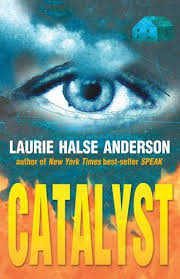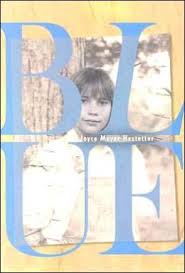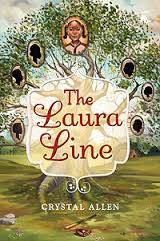My Guest Post on Voice featured on Natasha Hanova’s
“Writer of YA Paranormal Blog”
Over the past few years I’ve been critiquing manuscripts for authors trying to break into the business. One of the biggest stumbling blocks centers around “voice.” One of the most common editorial responses is “I can’t connect with your character.” Sometimes it is because their experience and personality is not a fit for what you wrote. Other times its because they can’t find the “voice” or it rings untrue. So in conferences, you’ll hear this topic come up a lot.
When an editor or agent says they look for “voice” what does that mean? Your voice? Character voice? Actually it’s a little bit of both, with a larger percentage of it leaning towards the latter. Characters – the protagonist and the ancillary cast of characters have unique cadences and quirks that distinguish them from each other, and from characters in other books.
YA is one of the hardest genres to write because the age of the protagonist puts them squarely in the headwind of emotional upheaval. High school, relationships – romantic or otherwise, self image, body changes. All experiences that are both sweet and horrible and every emotion in between – often occurring at the same time.
I started to notice a trend among both aspiring new writers and experienced authors trying to switch from younger genres such as picture books.
1. The voice of the character is buried or usurped. I’m told what the author feels is going on but I don’t get to hear it or see it from the character’s actual point of view.
For example:
I sat in the corner shivering while my mother gestured for Jake to sit on the couch.
“She suffered a trauma,” said my mother. “Years ago, her boyfriend was killed in a boating accident. Sarah was watching from the shore.”
“Will she be alright?” he asked, staring in my direction.
“In time,” my mother replied. “She’s seeing a psychiatrist and taking her meds so she can go back to school to study to be a world-class anthropologist.”
“Really? Anthropologist? How can I help, Mrs. Johnson? You know I love your daughter.”
He glances in my direction, then continues as he takes a sip of my mother’s favorite blend of coffee. The one she gets from the Farmer’s market on Saturday mornings . . . . .
This type of author intrusion is more common than you think. The author – an adult – wants to add all their hopes and dreams for the character in the narrative. Doesn’t matter what Sarah wants to say. Doesn’t matter that the Sarah, the protagonist, would be a stronger catalyst for revealing the information. In the above Sarah is a prop and the voice we hear is that of the author acting as narrator and stage director.
2. The character seems shallow because the author blew past a critical scene. I get the “Cliff Notes” version of the action and setting, not a fully rich and in-depth experience.
In one manuscript, the protagonist is facing a life threatening illness. This can be a pivotal moment in a book. But instead, she goes shopping for an entire chapter. When arriving at the doctor’s office, the discussion is short and perfunctory, the doctor delivers the bad news – she’s dying – and then leaves to see another patient. We get no reaction to the abruptness (which isn’t quite accurate) or the news other than the character was now sad.
In another case, the protagonist is in love with someone. But in the ensuing action we can’t figure out why other than they’re cute. I often see manuscripts with a laundry list of physical descriptions and zero physical reactions when the person is in close proximity. Sweaty palms? Heart races? Breath catches in their throat? Nope. Nada. We’re just supposed to take the author’s word that this is a love connection waiting to happen.
3. The author (or editor) doesn’t “know” the voice. Sometimes (just sometimes) the author doesn’t understand the setting or the character because they don’t expose themselves to teens.
Years ago, Richard Peck – an award winning author – gave a lecture on voice. He talked about teaching a college course and critiquing work by the adults in the class. He told one particular student that her middle school boy sounded more like a girl. The author explained she was writing it based on her daughter’s life but wanted to hide the identity. He told her it was best to let the character have their own life. And perhaps the character should be a girl if that was more familiar. Upon reading the revision he pointed out that the protagonist – now a girl – sounded more like a middle class woman from Vassar. To which the woman replied “Mount Holyoke, thank you very much.”
Needless to say there wasn’t much improvement after that because, like most adults he pointed out, the woman also didn’t know what was going on in the life of her child when she wasn’t around. Sound familiar? I remembered this example when critiquing the manuscript about the girl who was sitting in the corner. The authors, as it turned out, were passionate – but had no day-to-day exposure to modern teens.
4. The author writes from a distance. The point of reading a book and immersing in a character is to see where they go and what they do when faced with an obstacle. In YA, those obstacles are often emotional and not necessarily rational. But they are real to the character. But that means hurting them. Which also means hurting yourself.
In an upcoming novel I have to kill a character I adore so that the protagonist can go through an emotional upheaval. In fact, the protagonist is a direct catalyst for the problem. I avoided writing it. I cleaned my office, cooked elaborate dinners, called long lost friends. Anything to keep from making that decision. And of course, the characters weren’t too keen on it either. But hurt happens. When I did it I cried for days at the damage I’d done to my protagonist and searched desperately for a way to bring his friend back. Ghost? Flashback? Too forced a solution. I had to admit, what was done, needed to be done and to let it stay “real” and in the moment.
But I’ve read stories in which the author reverts to “tell” versus show because it allows them to keep their emotional distance. And in the end, no one is entirely satisfied.
SUGGESTIONS
It occurred to me that after reading and referring authors to a myriad of writing resources, few get to the heart of the issue because it’s so hard to define. We can talk denouements, climax and plot progression all we want, but it all falls apart if the voice is not there. A strong voice in an imperfect construction can be successful (think of a certain black jacketed series about sparkly vampires) because it hit an emotional moment. A weak or flawed voice in a perfect construction will fail to find an audience. In the latter case, I knew of a local author who beat and revised a book to death – in my opinion stripping it of all the color that made the book come alive – and although it won an award, it was the adults that bestowed that honor – the teens the book was written for loathed it and called it boring in Amazon reviews.
So – here are some tips on voice:
GET OUT OF THE WAY. Despite your assertions, this is your character’s story to tell not yours. You may have an idea of where the story is going, but the best books are those in which the character surprises you and takes you on a journey you didn’t anticipate. One of my editors often says – I can edit what is there, but I can’t edit what is not there.
LET YOUR CHARACTER SPEAK. I’ll admit I got this advice early on and was resentful until I put the manuscript aside and looked at it with fresh eyes. Try letting your character speak without interference. Let them live their lives while you follow them around and record the events. As an author you should “shape” the narrative into a cohesive form – but never, ever insert yourself into the mix. It doesn’t matter what YOU want. It matters that we see and feel what the character wants.
IF YOU DON’T CRY YOUR READER WON’T CRY. Don’t tell me, show me the reactions, raw and gritty and full of waiting traps and open wounds. Protecting the character actually smothers them. Protecting your own emotions while writing leaves the page lifeless.
IF THE SCENE WAS EASY TO WRITE IT’S PROBABLY NOT READY TO READ. Honestly – characters are multifaceted beings surrounded by settings that, even as they are described, give insight to the character’s voice and state of mind. That same scene, in the eyes of a different character, might read completely differently.
MINE YOUR OWN EMOTIONS for guideposts. Everyone was a teen. And most of us know we wouldn’t go back to that angst for a million dollars. So tap that. Teens change but emotional reactions can have commonalities. First love, rejection, sadness, fear all spring from the same place. So write what you DO know, not what you think you know or how you ‘wish’ things had been.
Here are some excerpts from books I pulled off my shelf at random (I know all of these authors personally except Chris Crutcher who I met twice but I doubt he’ll remember). I don’t think anyone would mistake the voices of the following as being from the same characters:
Fat Tuesday by Susan Vaught (Bloomsbury USA):
 It was Daniel who hatched the plot to destroy Sergeant Eason, fix my door, and run away to Mardi Gras – and that was before anyone went to prison.
It was Daniel who hatched the plot to destroy Sergeant Eason, fix my door, and run away to Mardi Gras – and that was before anyone went to prison.
Catalyst by Laurie Halse Anderson (Penguin)
 I like to run at night. No one watches me. No one hears my sneakers slipping in the loose gravel at the side of the road. Gravity doesn’t exist. . . . . On the outside I’m Good Kate, Rev. Jack Malone’s girl . . . On the inside I am Bad Kate, daughter of no one.
I like to run at night. No one watches me. No one hears my sneakers slipping in the loose gravel at the side of the road. Gravity doesn’t exist. . . . . On the outside I’m Good Kate, Rev. Jack Malone’s girl . . . On the inside I am Bad Kate, daughter of no one.
Blue by Joyce Hostetter (Calkin’s Creek):
 My family huddled together on the railroad platform, but we wasn’t huddling to get out of the January wind. We was all trying to stay close to Daddy like that would keep him home somehow.
My family huddled together on the railroad platform, but we wasn’t huddling to get out of the January wind. We was all trying to stay close to Daddy like that would keep him home somehow.
Whale Talk by Chris Crutcher (Greenwillow)
 In the end, write it down. Back up and find the story. Mr. Simet, my English and journalism teacher says the best way to write a story, be it fact or fiction, is to believe aliens will find it someday and make a movie and you don’t want them making Ishtar.
In the end, write it down. Back up and find the story. Mr. Simet, my English and journalism teacher says the best way to write a story, be it fact or fiction, is to believe aliens will find it someday and make a movie and you don’t want them making Ishtar.
The Laura Line by Crystal Allen (Balzer and Bray/HarperCollins)
 Sweet Mother of Teen Vogue magazine, I’m model-marvelous in this new outfit! And when the doors of the bus open like stage curtains, I pooch my lips, raise my chin, and use the school sidewalk as my runway. A rhythm I didn’t know I had moves my feet to a beat only I can hear. But it’s all good because I KNOW I look amazing.
Sweet Mother of Teen Vogue magazine, I’m model-marvelous in this new outfit! And when the doors of the bus open like stage curtains, I pooch my lips, raise my chin, and use the school sidewalk as my runway. A rhythm I didn’t know I had moves my feet to a beat only I can hear. But it’s all good because I KNOW I look amazing.
Five different and very successful authors. Five different voices – none could be taken for Hermione Granger, or Bella Swan, or the lead characters in a host of other movies.
Unique. Distinguishable. Honest.
And yet voice is also about your personal writing style. Some people can write in multiple styles but writing is like music. We can tell if a song is written by Pat Metheny, for instance, even when he switches styles because he has unique signatures in his work. We can still tell Michael Jackson’s voice whether it is Thriller, or Man in the Mirror.
So in the examples above, for instance, Crystal Allen’s work is always cheeky and irreverent. Chris Crutcher’s stories are edgy and hard-edged. We often seek authors new works because we identify with their approach to writing and their unique voice as writers. Even so, the characters in each book have their own distinctive styles and nuances.
Voice – above all – is about the courage to be emotionally honest with the reader. It is about allowing them to connect with someone who – in most cases – is not going to be you.
Many blessings on your own writing journey – Namaste!………Christine Taylor-Butler
Originally published at: http://natashahanova.com/

